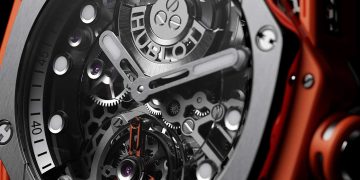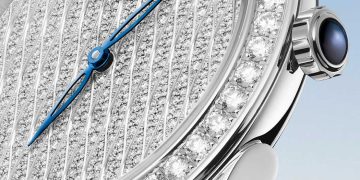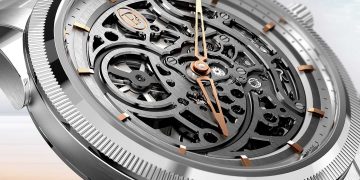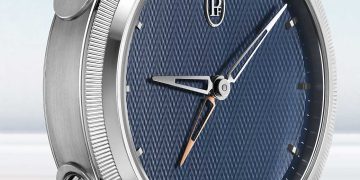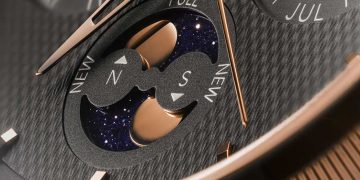A Transfixing Expression Of Time
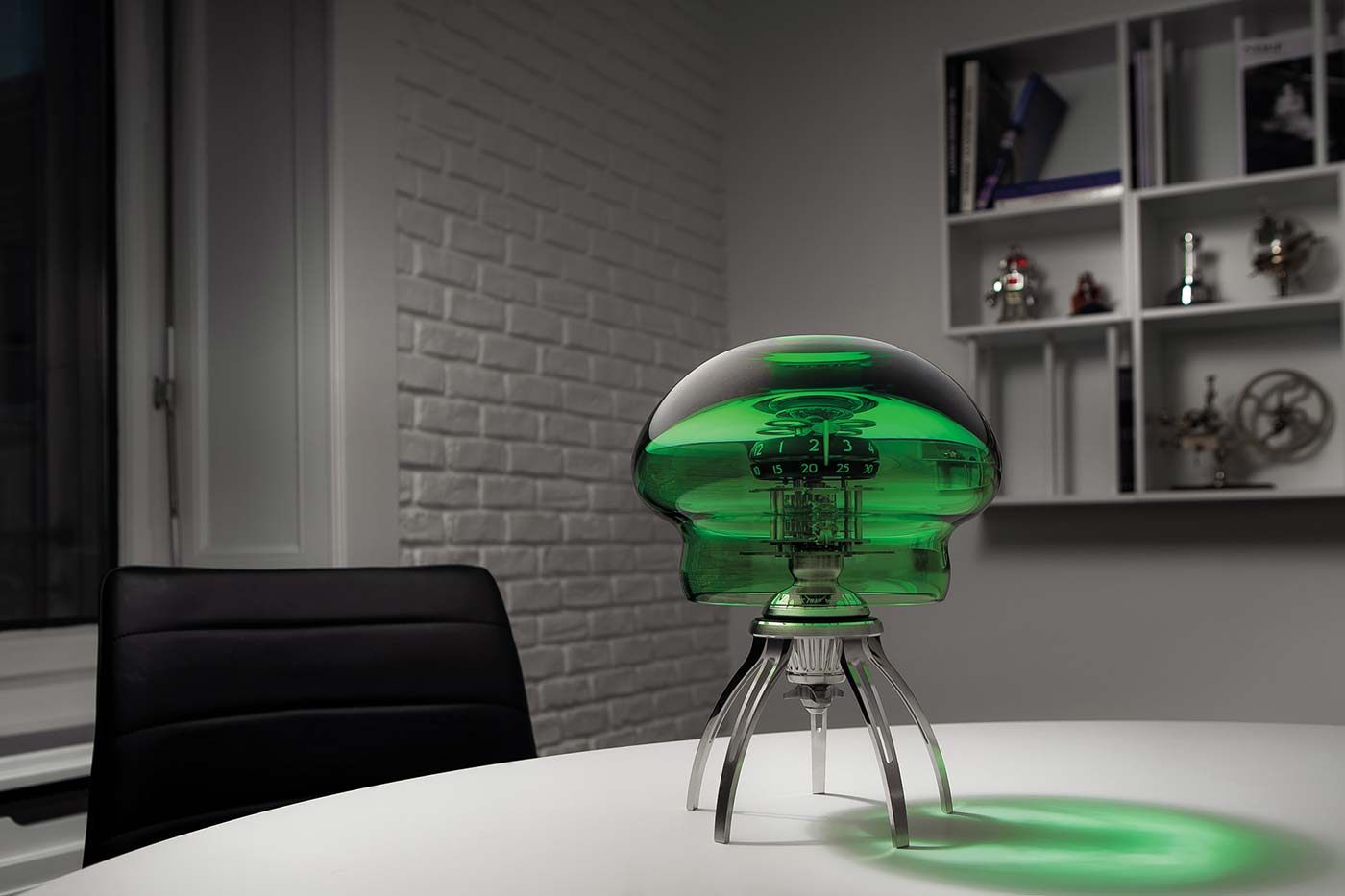
In its tenth collaboration with Switzerland’s premier clockmaker, L’Epée 1839, MB&F plunges into warm ocean waters where the beautiful and ancient jellyfish proliferate. Medusa is a dual-configuration clock, housed in hand-blown Murano glass, that can be ceiling mounted or stood upon a desk. In the form of one of the most compelling yet mysterious creatures of the sea, Medusa blends exceptional artisanal skill with Swiss horological precision, and introduces new frontiers in both.
The central mass of Medusa is formed by a large transparent dome of hand-blown Murano glass that evokes the bell-shaped body of a mature jellyfish. Two rotating rings, one displaying the hours and the other displaying the minutes, are visible through the dome, and the time is read off a single fixed indicator that extends over the rings. Like a jellyfish glowing in the abyss, Medusa glows in the dark thanks to Super-LumiNova. A 2.5Hz (18,000vph) movement beats underneath the time indication, forming the pulsating heart of this mechanical creature.
The movement of Medusa is entirely new and required over two years of development by L’Epée 1839. Whereas the other co-creations had separate points of winding and setting, Medusa required a combined system for winding and setting, since the surrounding glass dome limits access to the movement. Furthermore, in order to maximise the visual impact of the clock and reinforce the source of its design inspiration, the movement was engineered around a central axis, mimicking the radial symmetry of a jellyfish’s neural column.
Perfecting the glass exterior of Medusa – available in blue, green or pink – was as challenging as any aspect of its movement creation. The pink edition, in particular, required multiple stages of layering red and clear glasses to achieve exactly the right shade desired.
For the best possible aesthetic result, the dome and tentacles had to be crafted from the same glass, which would give them the same optical qualities. The skill needed to produce by hand a set of consistent glass tentacles for each clock exists only in very few glassblowing houses. Add to this the difficulty of creating a hand-blown Murano glass dome that has to appear extremely light and delicate, and yet withstand the weight of a clock movement – it’s easy to see why only one Murano glassblower, out of the 40 companies that L’Epée 1839 approached, was able to accomplish the task.
Independent designer Fabrice Gonet first proposed Medusa in 2016 to MB&F founder Maximilian Büsser, who immediately saw the appeal of Gonet’s sketch and recognised the essential spirit of an MB&F creation in its lines. Says Büsser, “I’ve known Fabrice for some years but we never had the chance to work together before. When he wanted to show me one of his designs, I accepted, even though I don’t normally say yes to this kind of thing — also because I saw that his design was of a clock and not a watch. The vision was so clear that, in the end, the final clock turned out to be very close to the initial sketch!”
Medusa comes in three limited editions of 50 pieces, each in a different colour – blue, green and pink – chosen to reflect the natural hues of a jellyfish.
MEDUSA IN DETAIL
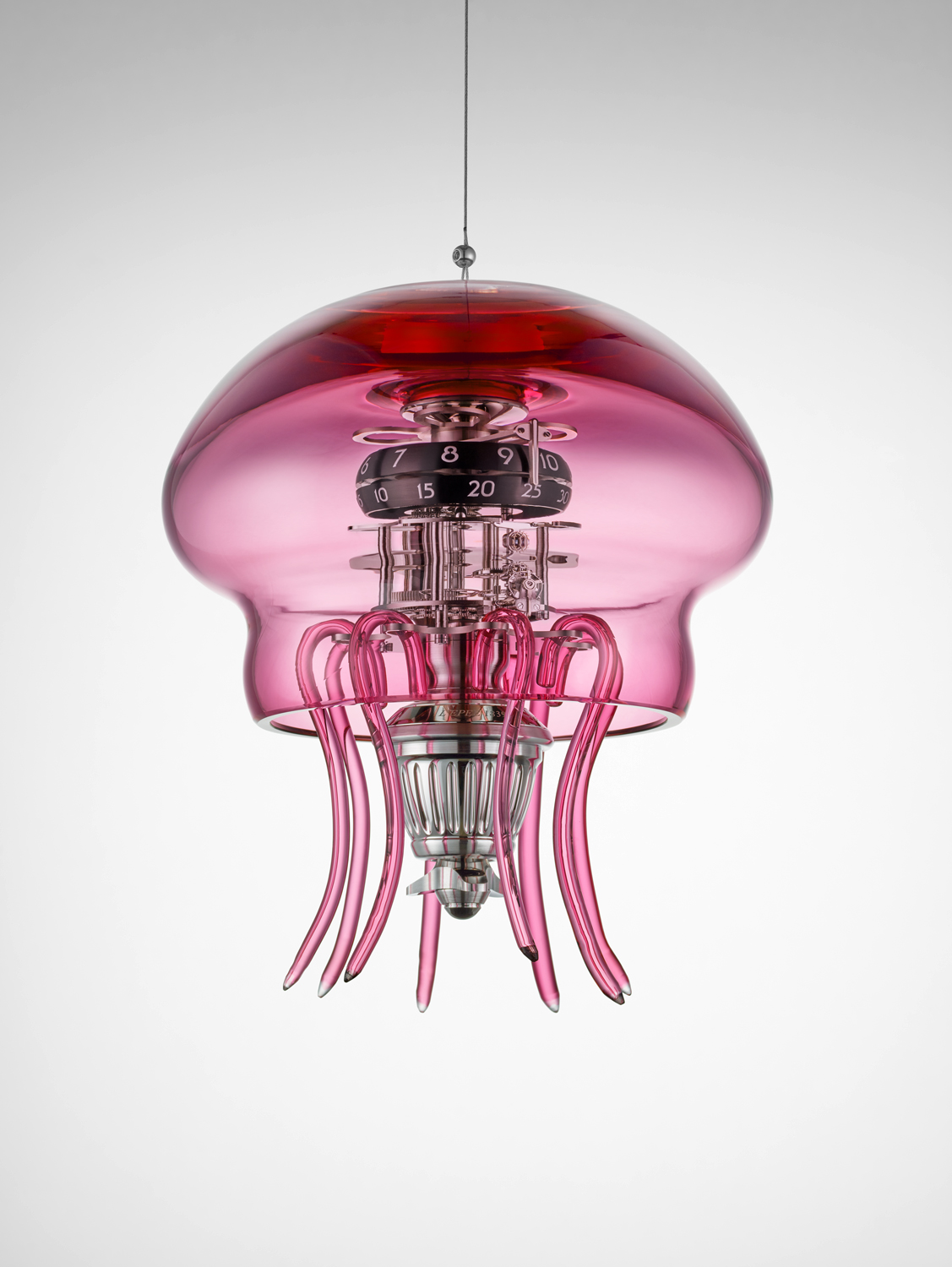
A New Movement
L’Epée went back to the drawing board for Medusa, designing the movement entirely from scratch. Due to the weight of the outer glass shell and its vulnerability to shock damage, it was necessary to build a movement that could be wound one-handed, with the other hand available to stabilise the clock. Additionally, with most of the movement surrounded by glass, access to any winding or setting mechanisms would be limited.
In a departure from their previous clock movements, L’Epée 1839 combined the winding and setting systems in the Medusa movement. A single propeller element, which projects from the bottom of the movement for easy access, is rotated anticlockwise to wind the movement and clockwise to set the time. Whether in its ceiling-mounted or stand-mounded configuration, Medusa is easily and intuitively wound and set.
With no reinforcing outer support structures, the movement of Medusa has been deliberately built to resemble the internal neural network of a jellyfish, with a central column and radial elements. This feature is not simply aesthetic; in terms of engineering it helps to preserve the integrity of the clock as it is suspended from the ceiling.
Dual configuration
Medusa can be set on a desk or any flat surface thanks to a special steel frame with curved legs, designed to receive the base of the movement whilst allowing for easy access to the winding and setting mechanism. When hung from the ceiling, Medusa can be further decorated with its hand-blown Murano glass tentacles, which hook onto the movement and sway gently with the slightest motion of the clock – recalling a free-floating jellyfish carried along by the current.
A body of glass
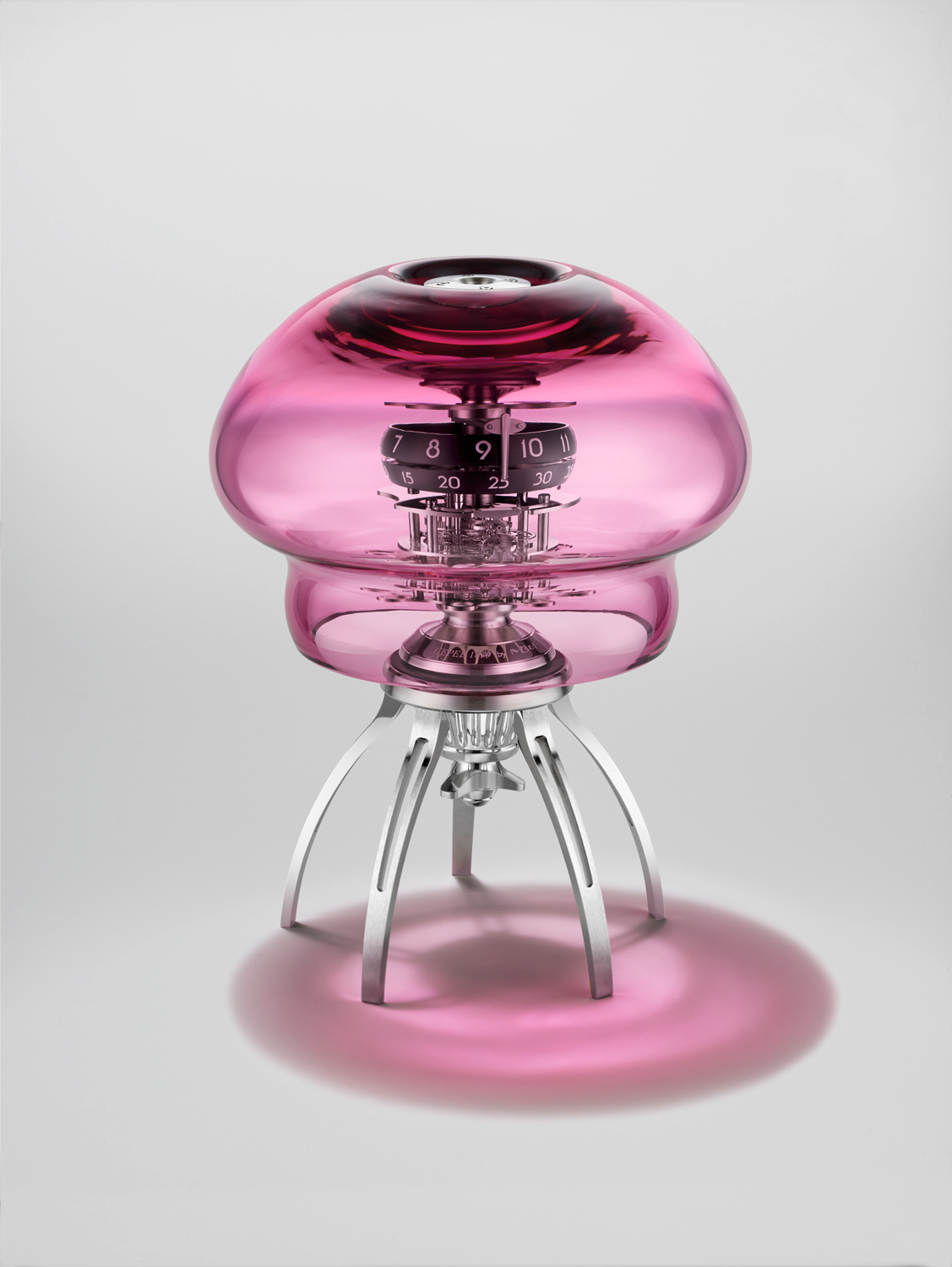
One of the greatest challenges in bringing Medusa to life was finding a glassblower that could fully realise the design. Like most MB&F + L’Epée creations, Medusa was not designed with the current limits of technique in mind. Instead, technique was developed to accommodate its design.
The ethereally light, undulating form of a jellyfish had to be captured in a billowing glass dome that could withstand the entire weight of the 2.34 kg clock. In calculating the dimensions and tolerances of the glass dome, the L’Epée 1839 team faced the daunting task of reducing the weight of the clock and keeping the glass as thick as possible without compromising the design or timekeeping performance of Medusa. As is the case with avant-garde creations, there was no precedent in pushing the materials so far beyond their conventional use. Through trial and error, the L’Epée team were finally able to arrive at the desired result: a glass outer body of incredible strength yet apparent delicacy.
Maintaining optical consistency between the glass dome and tentacles was essential, so the conventional solution of drawing the tentacles out from pre-formed glass rods was not possible. Instead, the tentacles were produced from the same glass bulk as the dome and individually hand drawn to identical shapes and widths, which requires considerable experience and skill.
Getting the right shade for the pink edition of Medusa proved problematic as well, since the same technique applied for the blue and green editions did not work in this case. Much like vitreous enamel, hand-blown glass is coloured by metal oxides, and the palette is limited by known formulas that have been handed down over centuries of glassworking expertise. The pink glass was therefore achieved by first layering red molten glass over a clear core and then subsequently blowing and drawing the glass out.
L’Epée approached 40 well-established glassblowers to produce Medusa, out of which only four agreed to even attempt the challenge. Only one succeeded.
The Medusa name
The associations that come with the name Medusa are varied and span the entire range of human experience, from the natural world’s mesmerising jellyfish with its trailing tentacles to the Gorgon of Greek myth whose every appearance could turn a man to stone. One thing is for sure, once you gaze into the depths of Medusa, it is hard to look away.
Medusa: technical specifications
Medusa is available in three limited editions of 50 pieces each with green, blue, or pink Murano hand-blown glass dome and tentacles.
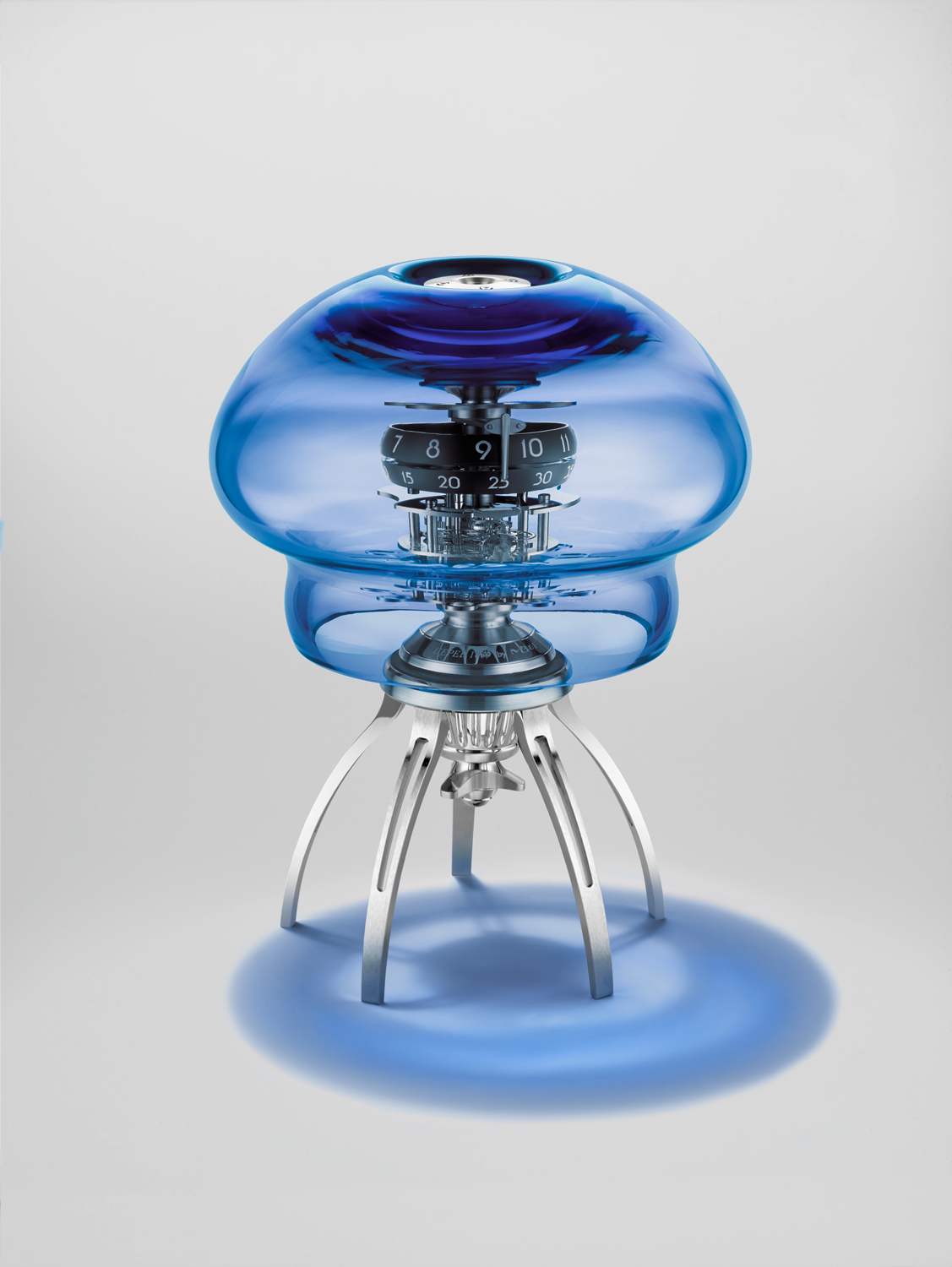
Display
Hours and minutes
Size
Dimensions:
Hanging position: 286 mm tall x 250 mm diameter
Standing position: 323 mm tall x 250 mm diameter
Components total: 231
Weight: approximately 6kg (the exact weight of the hand-blown glass dome varies)
Body/frame
Dome/tentacles: Murano hand-blown glass
Movement and standing base: stainless steel and brass
Indexes and top plate with Super-LumiNova
Engine
L’Epée suspended movement, designed and manufactured in-house
Balance frequency: 2.5 Hz / 18,000 bph
Power reserve: 7 days
Movement components: 155
Jewels: 23
Incabloc shock protection system
Movement finishing: Geneva waves, anglage, polishing, sandblasting, circular and vertical graining, satin finishing.
Integrated winding key to both set the time and wind the movement (propeller at the bottom of the movement).
Dual configuration
Ceiling-mounted: Medusa can be ceiling mounted thanks to the buckle located at the top of the movement. In this configuration the glass tentacles can be hung on the movement.
Standing: Medusa can stand on a table by way of a special metal base.
L’EPEE 1839 – the premier clock manufacture in Switzerland
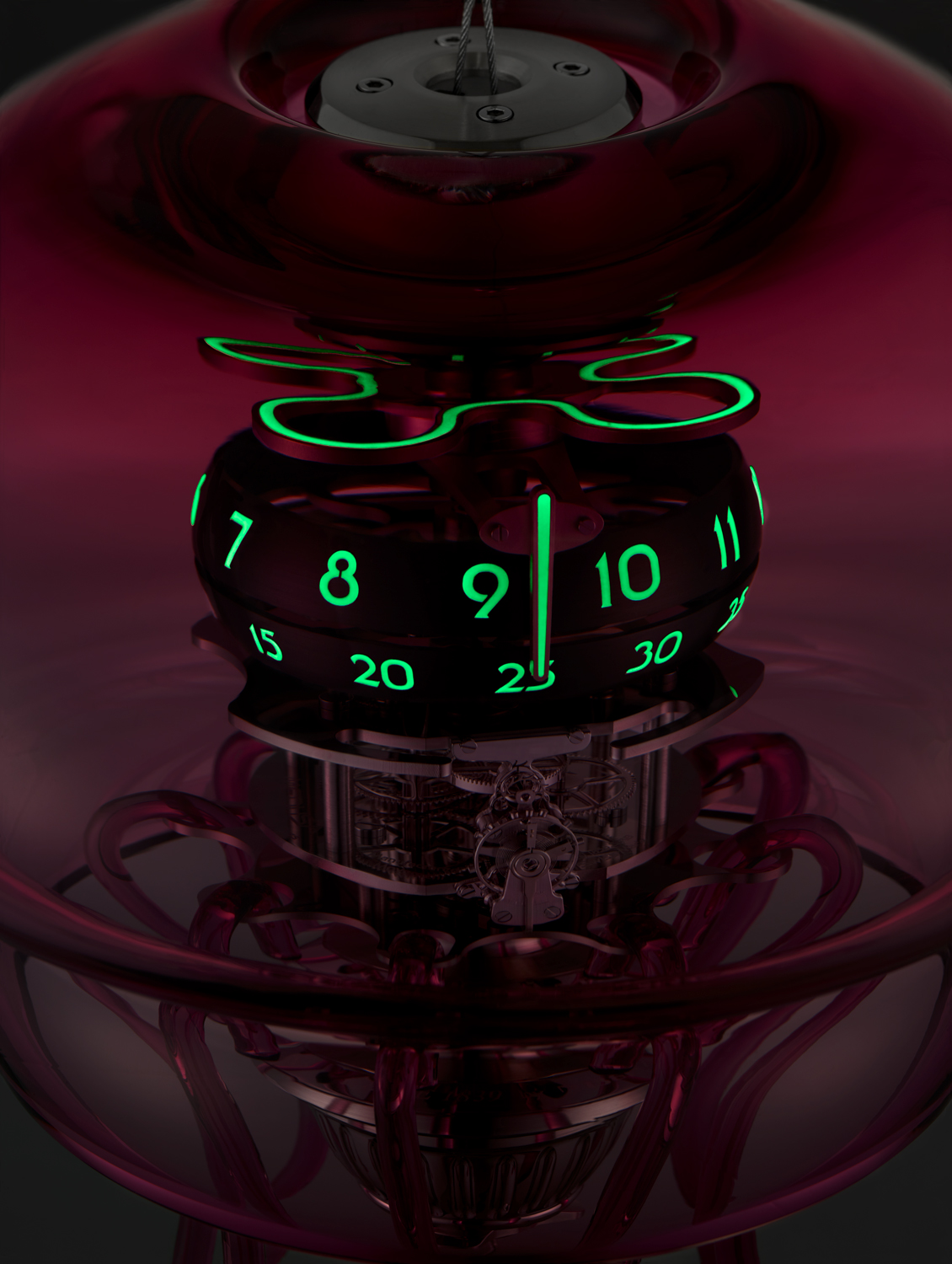
For more than 175 years, L’Epée has been at the forefront of clock making. Today, it is the unique specialised manufacture in Switzerland dedicated to making high-end clocks. L’Epée was founded in 1839, by Auguste L’Epée, who set up the business near Besançon, France to make music box and watch components.
From 1850 onward, the manufacture became a leading light in the production of ‘platform’ escapements, creating regulators especially for alarm clocks, table clocks and musical watches. By 1877, it was making 24,000 platform escapements annually. The manufacture became a well-known specialist owning a large number of patents on special escapements such as anti-knocking, auto-starting and constant-force escapements and the chief supplier of escapements to several celebrated watchmakers of the day. L’Epée has won a number of gold awards at international exhibitions.
During the twentieth century, L’Epée owed much of its reputation to its superlative carriage clocks and, for many, L’Epée was the clock of the influential and powerful; it was also the gift of choice by French government officials to elite guests. In 1976 when the Concorde supersonic aircraft entered commercial service, L’Epée wall clocks were chosen to furnish the cabins, providing passengers with visual feedback of the time. In 1994, L’Epée showed its thirst for a challenge when it built the world’s biggest clock with compensated pendulum, the Giant Regulator. At 2.2 m high, it weighs 1.2 tons – the mechanical movement alone weighs 120 kg – and required 2,800 man-hours of work.
L’Epée is now based in Delémont in the Swiss Jura Mountains. Under the guidance of CEO Arnaud Nicolas, L’Epée 1839 has developed an exceptional table clock collection, encompassing a range of sophisticated classic carriage clocks, contemporary design clocks and avant-garde horological sculptures. L’Epée clocks feature complications including retrograde seconds, power reserve indicators, perpetual calendars, tourbillons and striking mechanisms – all designed and manufactured in-house. Ultra-long power reserves have become a signature of the brand as well as superlative fine finishing.
MB&F – Genesis of a Concept Laboratory
2018 marked the 13th year of hyper-creativity for MB&F, the world’s first-ever horological concept laboratory. With 15 remarkable calibres forming the base of the critically acclaimed Horological and Legacy Machines, MB&F is continuing to follow Founder and Creative Director Maximilan Büsser’s vision of creating 3-D kinetic art by deconstructing traditional watchmaking.
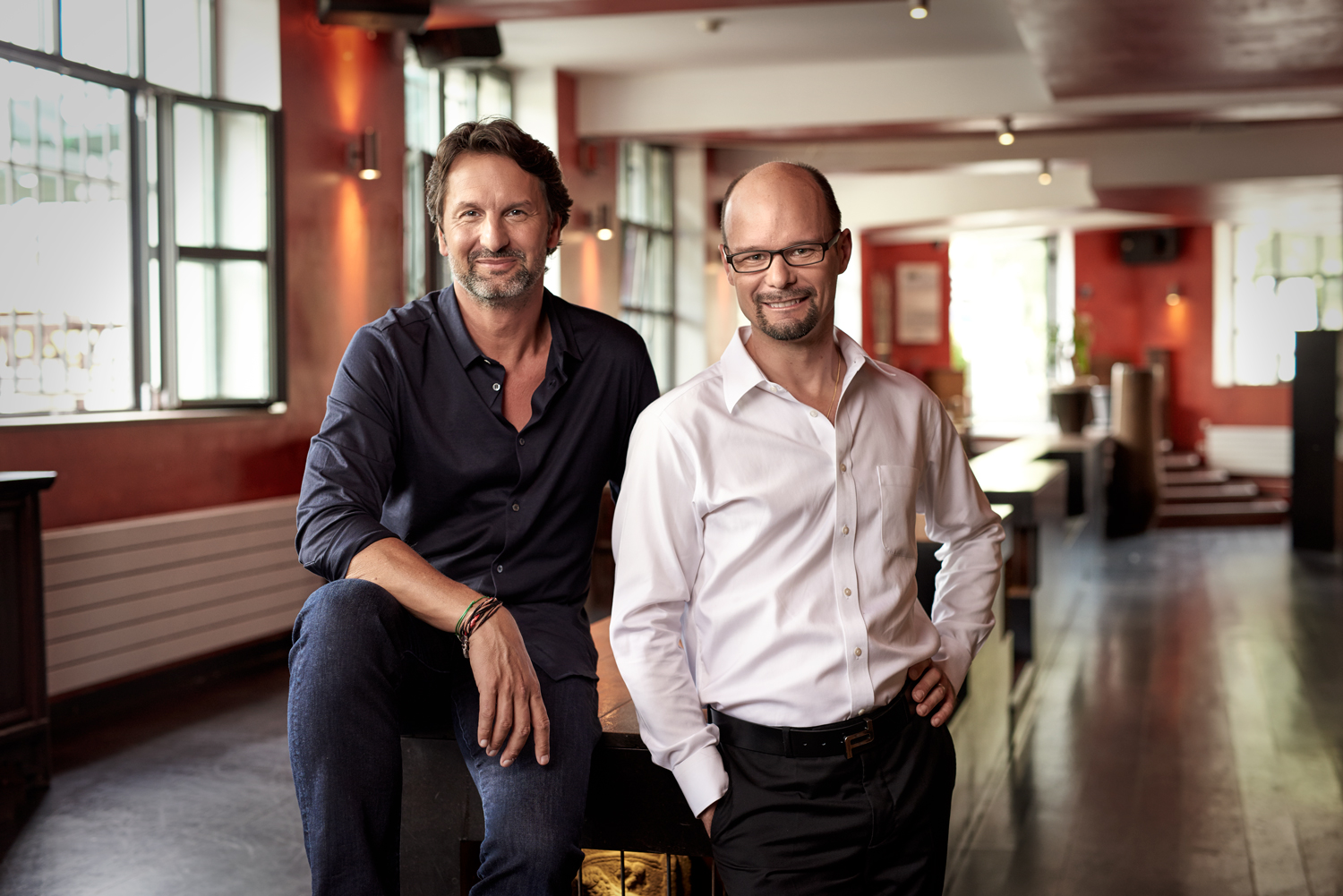
After 15 years managing prestigious watch brands, Maximilian Büsser resigned from his Managing Director position at Harry Winston in 2005 to create MB&F – Maximilian Büsser & Friends. MB&F is an artistic and micro-engineering laboratory dedicated to designing and crafting small series of radical concept watches by bringing together talented horological professionals that Büsser both respects and enjoys working with.
In 2007, MB&F unveiled its first Horological Machine, HM1. HM1’s sculptured, three-dimensional case and beautifully finished engine (movement) set the standard for the idiosyncratic Horological Machines that have followed – all Machines that tell the time, rather than Machines to tell the time. The Horological Machines have explored space (HM2, HM3, HM6), the sky (HM4, HM9), the road (HM5, HMX, HM8) and water (HM7).
In 2011, MB&F launched its round-cased Legacy Machine collection. These more classical pieces – classical for MB&F, that is – pay tribute to nineteenth-century watchmaking excellence by reinterpreting complications from the great horological innovators of yesteryear to create contemporary objets d’art. LM1 and LM2 were followed by LM101, the first MB&F Machine to feature a movement developed entirely in-house. LM Perpetual and LM Split Escapement broadened the collection further. MB&F generally alternates between launching contemporary, resolutely unconventional Horological Machines and historically inspired Legacy Machines.
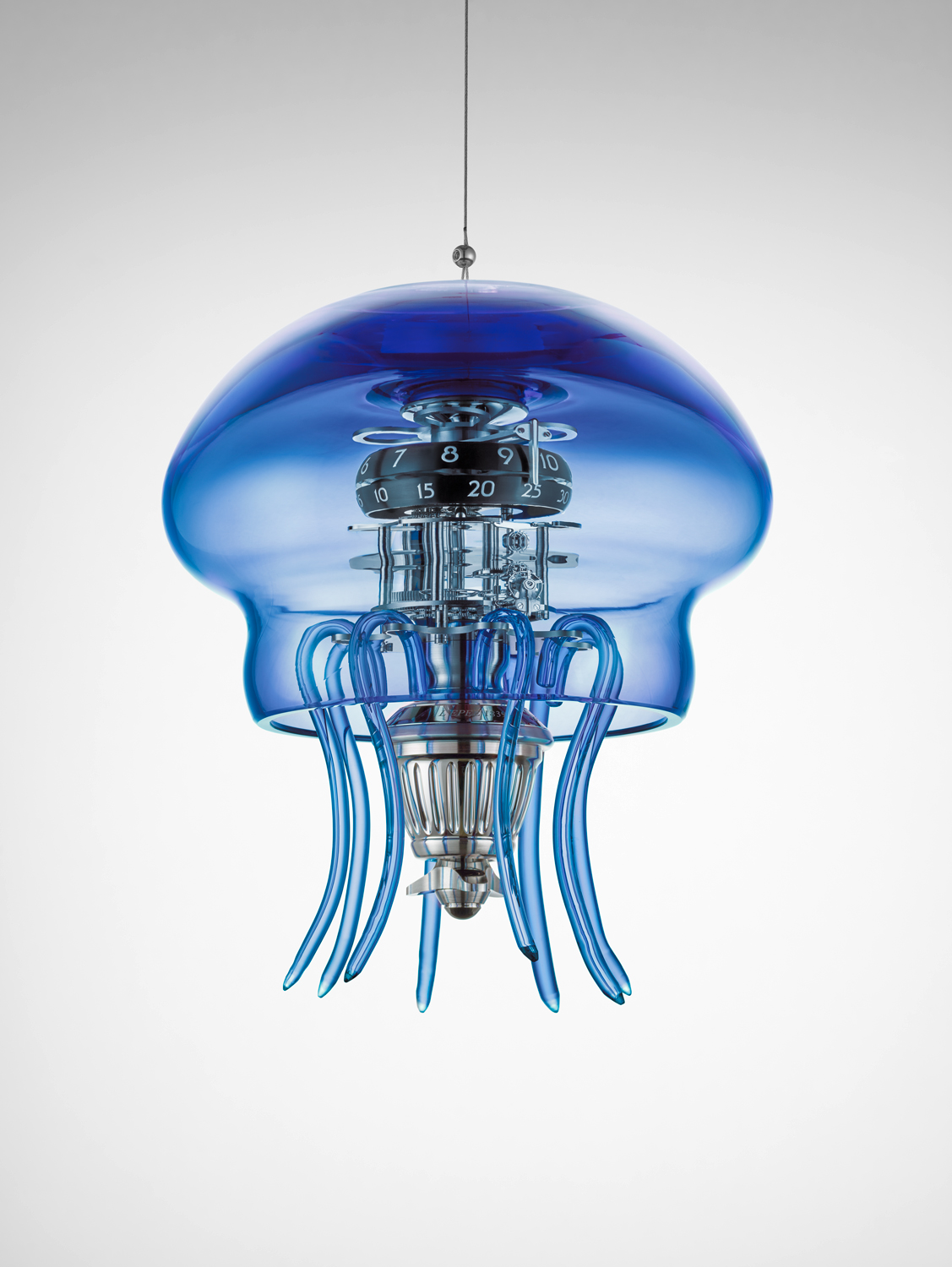
As the F stands for Friends, it was only natural for MB&F to develop collaborations with artists, watchmakers, designers and manufacturers they admire.
This brought about two new categories: Performance Art and Co-creations. While Performance Art pieces are MB&F machines revisited by external creative talent, Co-creations are not wristwatches but other types of machines, engineered and crafted by unique Swiss Manufactures from MB&F ideas and designs. Many of these Co-creations, such as the clocks created with L’Epée 1839, tell the time while collaborations with Reuge and Caran d’Ache generated other forms of mechanical art.
To give all these machines an appropriate platform, Büsser had the idea of placing them in an art gallery alongside various forms of mechanical art created by other artists, rather than in a traditional storefront. This brought about the creation of the first MB&F M.A.D.Gallery (M.A.D. stands for Mechanical Art Devices) in Geneva, which would later be followed by M.A.D.Galleries in Taipei, Dubai and Hong Kong.
There have been distinguished accolades reminding us of the innovative nature of MB&F’s journey so far. To name a few, there have been no less than 4 Grand Prix awards from the famous Grand Prix d’Horlogerie de Genève: in 2016, LM Perpetual won the Grand Prix for Best Calendar Watch; in 2012, Legacy Machine No.1 was awarded both the Public Prize (voted for by horology fans) and the Best Men’s Watch Prize (voted for by the professional jury). In 2010, MB&F won Best Concept and Design Watch for the HM4 Thunderbolt. In 2015 MB&F received a Red Dot: Best of the Best award – the top prize at the international Red Dot Awards – for the HM6 Space Pirate.

